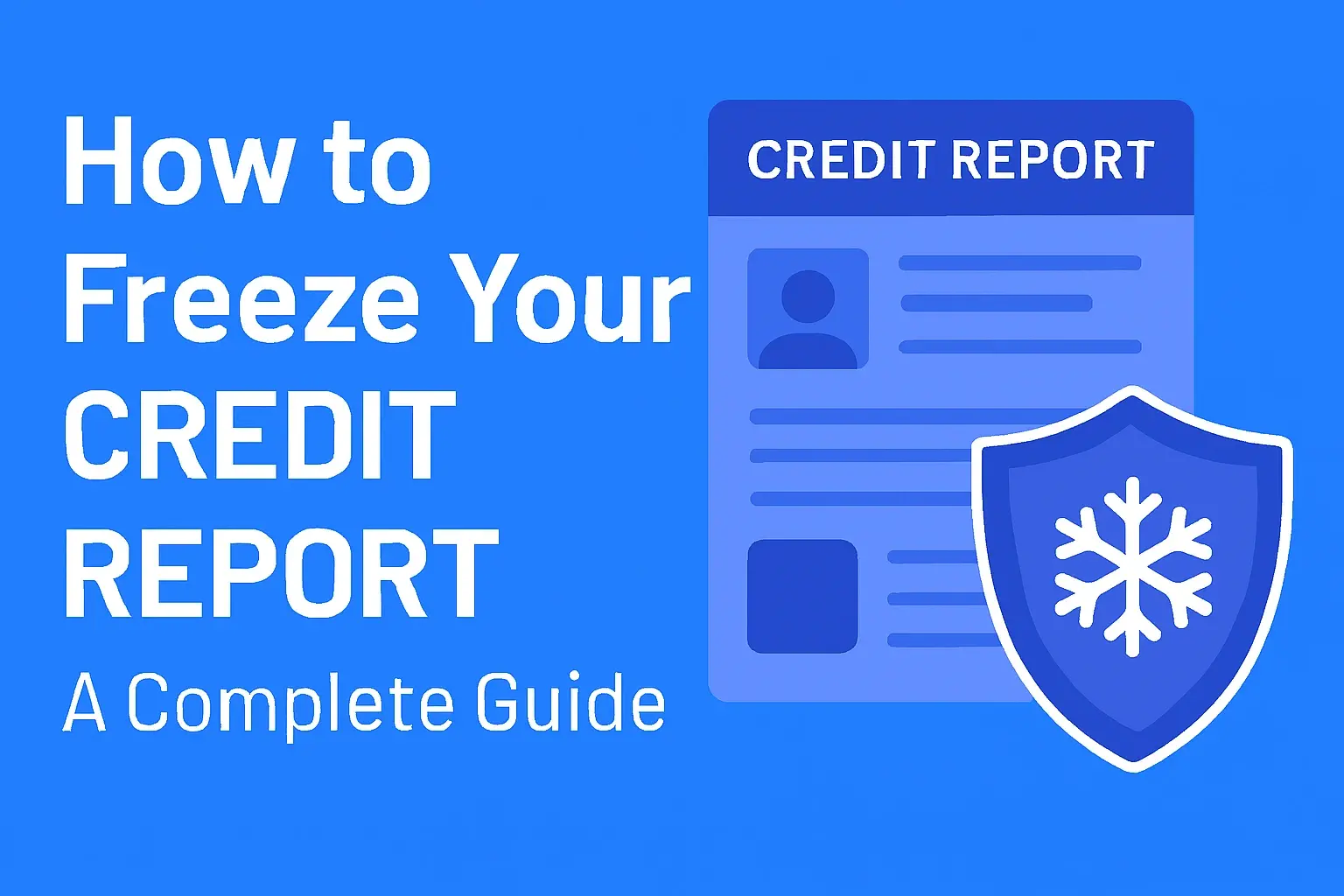-
Posted on: 31 Jul 2024
-
Understanding the average credit card limit is crucial for financial planning and responsible borrowing. This guide delves into what influences these limits, current 2025 averages, and how you can work towards a higher limit for your own needs.
Understanding Credit Limits
A credit limit is the maximum amount of money a credit card issuer will allow you to borrow on a particular credit card. It's a fundamental aspect of credit card usage, acting as a ceiling for your spending on that card. When you make a purchase, the amount is deducted from your available credit. Once you pay down your balance, that amount becomes available again. Issuers set these limits based on a variety of factors, primarily related to your creditworthiness and their risk assessment. For consumers, understanding their credit limit is essential for managing their finances effectively, avoiding overspending, and maintaining a healthy credit profile. A higher credit limit doesn't necessarily mean you should spend more; rather, it offers greater flexibility for larger purchases or emergencies, provided you manage it responsibly. Conversely, a low credit limit can sometimes indicate a higher risk to the lender or a reflection of a limited credit history. This guide aims to demystify the concept of credit limits, providing clear, actionable insights for everyone from credit novices to seasoned users.
What is the Average Credit Card Limit in 2025?
Pinpointing a single, definitive "average" credit card limit is challenging due to the vast diversity in card types, issuer policies, and consumer credit profiles. However, based on recent industry data and projections for 2025, we can establish a general range and understand the nuances. For general-purpose credit cards, the average credit limit often falls between $5,000 and $10,000. This figure, however, is a broad average that encompasses a wide spectrum. Some individuals may have limits as low as a few hundred dollars, particularly with secured credit cards or for those new to credit, while others with excellent credit and high income can command limits of $20,000, $30,000, or even significantly more on premium or charge cards.
It's important to recognize that this average is heavily influenced by several factors, including the type of credit card, the issuing bank's risk tolerance, and, most critically, the individual applicant's creditworthiness. For instance, a student credit card will naturally have a much lower average limit than a premium travel rewards card. Similarly, someone with a long history of responsible credit management will likely be offered a higher limit than someone with a short or checkered credit past. Therefore, while $5,000-$10,000 serves as a useful benchmark, it's more insightful to understand the drivers behind these numbers and how they apply to your personal financial situation. As of 2025, lenders continue to refine their algorithms for credit limit assignment, often incorporating more data points than in previous years to assess risk more accurately.
Factors Influencing Your Credit Limit
Your credit limit isn't assigned arbitrarily; it's a calculated decision by the credit card issuer based on a comprehensive assessment of your financial profile. Understanding these factors can empower you to take steps that may lead to a higher credit limit in the future. Here are the primary determinants:
1. Credit Score
This is arguably the most significant factor. Your credit score, such as the FICO score or VantageScore, is a numerical representation of your creditworthiness. A higher score indicates a lower risk to the lender, making them more comfortable extending a larger line of credit. Lenders typically look for scores above 700 for prime credit cards and even higher for those offering substantial limits.
2. Credit History Length and Depth
A longer credit history, demonstrating years of responsible borrowing and repayment, builds trust with lenders. They want to see a consistent pattern of on-time payments and manageable debt levels over an extended period. A credit report that shows a variety of credit accounts (e.g., installment loans, revolving credit) managed well can also be beneficial.
3. Income and Employment Stability
Lenders assess your ability to repay the debt. A higher, stable income generally correlates with a greater capacity to handle larger credit limits. They will often ask for your income during the application process and may verify it. Consistent employment history also signals stability.
4. Debt-to-Income Ratio (DTI)
This ratio compares your total monthly debt payments to your gross monthly income. A lower DTI indicates that you have more disposable income available to service new debt, making you a less risky borrower. Lenders prefer a DTI below 43%, and ideally much lower, for credit card applications.
5. Existing Debt Load
The amount of credit you already have available and the balances you carry on other credit cards and loans play a role. If you have a lot of existing debt or are close to maxing out other credit lines, issuers may be hesitant to grant you a high limit on a new card.
6. Relationship with the Issuer
If you have a long-standing and positive banking relationship with the credit card issuer (e.g., checking accounts, savings accounts, previous loans), they may be more inclined to offer you a favorable credit limit. They already have a history with you and understand your financial behavior.
7. Type of Credit Card
As discussed in the next section, different types of credit cards are designed for different consumer segments and come with varying typical credit limits. A student card will have a lower limit than a premium travel card, regardless of your credit profile.
By focusing on improving these areas, individuals can significantly increase their chances of securing higher credit limits when applying for new cards or requesting an increase on existing ones. For instance, paying down existing debt and consistently making on-time payments are foundational steps for any credit improvement journey.
Average Limits by Card Type
The average credit card limit can vary dramatically depending on the specific type of credit card. Issuers tailor these cards to different consumer needs and risk profiles, which directly impacts the credit limits they offer. Here's a breakdown of typical average limits for various card categories in 2025:
Secured Credit Cards
Average Limit: $300 - $1,000
These cards require a cash deposit that typically matches the credit limit. They are designed for individuals with no credit history or poor credit. The deposit serves as collateral, minimizing the lender's risk. Therefore, limits are generally low and directly tied to the deposit amount.
Student Credit Cards
Average Limit: $500 - $1,500
Targeted at college students, these cards are a way for young adults to build credit. Applicants often have limited credit history and income, leading to lower initial credit limits. The goal is to encourage responsible credit building.
Unsecured Starter Credit Cards
Average Limit: $500 - $2,000
Similar to student cards, these are for individuals with little to no credit history. They are unsecured, meaning no deposit is required, but the initial limits are typically modest to mitigate lender risk.
Standard Rewards Credit Cards
Average Limit: $3,000 - $7,000
These are everyday credit cards that offer rewards like cashback or points. They are generally available to individuals with fair to good credit. Limits are moderate, reflecting a balance between offering utility and managing risk.
Premium Travel & Rewards Cards
Average Limit: $5,000 - $15,000+
These cards often come with annual fees and offer extensive perks like travel insurance, airport lounge access, and higher rewards rates. They are typically targeted at individuals with excellent credit and higher incomes. As a result, they tend to have significantly higher credit limits, often starting in the $5,000 range and extending well beyond $15,000 for well-qualified applicants.
Store Credit Cards (Retail Cards)
Average Limit: $500 - $3,000
These cards are issued by specific retailers and can often be obtained with less stringent credit requirements than general-purpose cards. However, their credit limits are usually lower, and they often come with higher interest rates.
Charge Cards
No Pre-set Spending Limit (NPSL) - but not unlimited
While often advertised as having no pre-set spending limit, charge cards (like some American Express cards) are not truly unlimited. They have a flexible spending power that adjusts based on your spending patterns, payment history, and financial resources. Issuers evaluate your spending and payment behavior to determine your capacity. For users with excellent credit and a history of responsible use, this can translate to very high purchasing power.
It's crucial to remember that these are averages. Your individual credit limit will depend on your specific credit profile and the issuer's policies. A person with excellent credit might receive a higher limit on a standard rewards card than an average limit on a premium card if their income or debt-to-income ratio is not as strong.
How to Increase Your Credit Limit
If you find your current credit limit is insufficient for your needs or you simply want to improve your credit utilization ratio, there are several proactive steps you can take. Increasing your credit limit can be beneficial for managing your finances and positively impacting your credit score. Here’s a guide on how to achieve it:
1. Maintain a Strong Payment History
This is non-negotiable. Always pay your bills on time, every time. Late payments are a red flag for lenders and will hinder any attempts to increase your credit limit. Aim to pay at least the minimum amount due before the due date. Ideally, pay the statement balance in full to avoid interest charges.
2. Reduce Your Credit Utilization Ratio
Your credit utilization ratio (CUR) is the amount of credit you're using compared to your total available credit. A high CUR (generally above 30%) can signal to lenders that you might be overextended. By paying down balances on your existing cards, you lower your CUR. For example, if you have a $5,000 limit and a $2,500 balance, your CUR is 50%. Paying down the balance to $1,000 would bring your CUR to 20%, which is much more favorable.
3. Make Regular Payments
Even if you can't pay off your entire balance, making more than the minimum payment can demonstrate your commitment to managing your debt. Some issuers may even allow you to make payments more frequently than once a month, which can help keep your reported balance lower.
4. Request a Credit Limit Increase
Most credit card issuers allow you to request a credit limit increase. This can often be done online through your account portal or by calling customer service. Many issuers perform a "soft pull" on your credit report for this request, which does not affect your credit score. However, some may perform a "hard pull," which can temporarily lower your score slightly. It's best to inquire about their policy. * Timing is key: Wait at least six months after opening an account or after your last limit increase before requesting another. * Be prepared: Have your updated income information ready, as they may ask for it.
5. Demonstrate Responsible Use Over Time
Lenders periodically review accounts. If you consistently use your card for moderate spending and pay it off responsibly, the issuer may proactively offer you a credit limit increase. This is often the case after 12-24 months of good account management.
6. Improve Your Credit Score
If your credit score has improved since you opened your account, you are a better candidate for a higher limit. Focus on the fundamentals: pay bills on time, reduce debt, and avoid opening too many new accounts simultaneously. A higher credit score makes you a less risky prospect for lenders.
7. Increase Your Income
If your income has significantly increased since your last application or review, inform your credit card issuer. A higher income suggests a greater capacity to manage a larger debt burden. You may need to provide documentation to support this claim.
8. Consider a Balance Transfer (Strategically)
While not a direct method to increase a limit, if you have multiple cards with low limits and high balances, consolidating debt via a balance transfer to a card with a higher limit (or applying for a new card with a higher limit to transfer to) can help manage your overall utilization more effectively. Be mindful of balance transfer fees and interest rates after the introductory period.
By consistently practicing good financial habits and strategically requesting increases, you can effectively manage and grow your credit limits over time.
What to Do If Your Limit is Too Low
Discovering your credit card limit is lower than you expected or needed can be frustrating. Fortunately, this is often a temporary situation. The key is to understand why the limit is low and take appropriate steps to address it. Here’s a strategic approach:
1. Understand the Reason for the Low Limit
As detailed in the "Factors Influencing Your Credit Limit" section, a low limit is usually a reflection of your credit profile at the time of application. Common reasons include:
- Limited credit history
- Low credit score
- Insufficient income or unstable employment
- High existing debt-to-income ratio
- Applying for a card type typically associated with lower limits (e.g., student or secured card)
2. Focus on Building a Stronger Credit Profile
The most effective long-term strategy is to improve the very factors that led to the low limit. This involves:
- Consistent On-Time Payments: This is paramount. Even small payments made before the due date build a positive payment history.
- Reducing Credit Utilization: Pay down balances on all your credit cards. Aim to keep your utilization below 30% on each card and overall.
- Increasing Income and Stability: If possible, focus on career advancement or securing a more stable income source.
- Avoiding New Debt: Until your profile strengthens, be cautious about taking on significant new debt.
3. Request a Credit Limit Increase (After a Period of Good Behavior)
Once you've demonstrated responsible behavior with your current card for at least six months, you can request an increase. As mentioned, many issuers allow online requests. Be prepared to provide updated income information if asked. A consistent history of making payments on time and keeping balances low will significantly improve your chances.
4. Consider Applying for a Different Card
If your current card issuer is unwilling to increase your limit, or if you need a higher limit sooner, consider applying for a different credit card. Research cards that align with your credit profile and offer potentially higher limits. * For excellent credit: Look at premium travel or rewards cards. * For fair credit: Explore cards designed for building credit, but aim for those with higher potential limits than your current card. * Secured Cards: If you have very poor credit or no credit, a secured card is a good starting point. After a year of responsible use, you can often graduate to an unsecured card with a higher limit.
5. Utilize Existing Credit Wisely
If your limit is too low for a specific purchase, explore alternatives:
- Use a Different Card: If you have another credit card with a higher limit, use that one.
- Make a Partial Payment in Advance: For some purchases, you can pay a portion of the cost with your card and the rest with another payment method.
- Consider a Personal Loan: For very large purchases, a personal loan might be a more appropriate and cost-effective option, especially if you can secure a favorable interest rate.
6. Be Patient
Building credit and increasing credit limits takes time. Focus on consistent, responsible financial habits. Over months and years, your creditworthiness will improve, opening doors to higher credit limits and more favorable financial products.
It's important to avoid applying for too many credit cards in a short period, as this can negatively impact your credit score. Strategic, informed decisions are key to overcoming a low credit limit.
Impact of Credit Limit on Your Credit Score
Your credit limit plays a significant, though often indirect, role in your credit score. The primary way it impacts your score is through your credit utilization ratio (CUR). Let's break down how:
1. Credit Utilization Ratio (CUR)
This is one of the most critical factors influencing your credit score, typically accounting for about 30% of your FICO score. CUR is calculated by dividing the total amount of revolving credit you are using by the total amount of revolving credit you have available. For example:
- Scenario A: You have a credit card with a $5,000 limit and a $2,500 balance. Your CUR on this card is 50% ($2,500 / $5,000).
- Scenario B: You have the same card, but your limit is $10,000 with a $2,500 balance. Your CUR is now 25% ($2,500 / $10,000).
A lower CUR is generally better for your credit score. Therefore, a higher credit limit, assuming your spending remains the same, directly lowers your CUR. Lenders and credit scoring models view a low CUR (ideally below 30%, and even better below 10%) as a sign of responsible credit management and lower risk.
2. Available Credit as a Buffer
Having a higher credit limit provides a larger buffer. Even if you have a few larger expenses, a higher limit means you are less likely to reach a high utilization ratio. For instance, if you need to make a $3,000 purchase, it represents 60% of a $5,000 limit but only 30% of a $10,000 limit. This can prevent your CUR from jumping into the risky territory.
3. Potential for Overspending (Indirect Impact)
While a higher limit is generally beneficial for CUR, it also presents a temptation for overspending. If you consistently max out your credit cards, regardless of the limit, you will have a high CUR and a negative impact on your credit score. The credit limit itself isn't the problem; it's how you manage the credit it provides.
4. Credit Mix and Age of Accounts
The credit limit also plays a minor role in the "credit mix" component of your score, which favors having a variety of credit types (e.g., credit cards, mortgages, auto loans). While not directly about the limit amount, having access to higher limits on revolving credit demonstrates a capacity to manage different forms of credit. Furthermore, responsible use of credit over time, which includes managing higher limits without issues, contributes to the "length of credit history" factor.
5. Impact of Credit Limit Increases
When you successfully obtain a credit limit increase, your overall available credit goes up. If your balances remain the same, your credit utilization ratio will decrease, which is positive for your credit score. This is one of the key benefits of seeking and obtaining higher credit limits.
In summary, while credit scores are built on a foundation of payment history, amounts owed, length of credit history, credit mix, and new credit, the credit limit is intrinsically linked to "amounts owed" through the credit utilization ratio. Maximizing your credit limit responsibly is a strategic way to improve your credit score.
Common Misconceptions About Credit Limits
The world of credit cards and credit limits can sometimes be shrouded in myths. Understanding the facts can help you make better financial decisions. Here are some common misconceptions about credit card limits:
Misconception 1: A Higher Credit Limit Means You Should Spend More
Fact: Your credit limit is the maximum you *can* spend, not the amount you *should* spend. Responsible credit management involves spending only what you can afford to pay back and keeping your credit utilization low, regardless of how high your limit is. A higher limit offers flexibility and can improve your credit score by lowering your utilization ratio, but it doesn't grant permission to increase your spending habits irresponsibly.
Misconception 2: All Credit Cards Have the Same Average Limit
Fact: As we've seen, credit card limits vary significantly by card type (student, secured, premium travel, etc.), issuer, and individual creditworthiness. A student card will have a much lower average limit than a premium rewards card, even for the same person.
Misconception 3: Requesting a Credit Limit Increase Will Always Hurt Your Credit Score
Fact: While some credit limit increase requests may involve a "hard pull" on your credit report (which can cause a small, temporary dip in your score), many issuers now perform "soft pulls," which do not affect your score. Even with a hard pull, the potential benefit of a lower credit utilization ratio often outweighs the minor score impact. Furthermore, if your request is denied, it typically doesn't affect your score.
Misconception 4: You'll Automatically Get a Higher Limit After a Year
Fact: While many issuers review accounts periodically and may offer automatic increases after a period of good behavior, it's not guaranteed. Proactive management, demonstrating consistent on-time payments, and maintaining low balances are crucial. Sometimes, you still need to request an increase yourself.
Misconception 5: A Low Credit Limit Means You Have Bad Credit
Fact: Not necessarily. A low credit limit can be due to a lack of credit history (e.g., a student card), a recent credit event that hasn't fully recovered, or simply the type of card you have. While poor credit often results in low limits, a low limit doesn't automatically equate to bad credit.
Misconception 6: Charge Cards Have Unlimited Spending Power
Fact: Charge cards, like some from American Express, often advertise "no pre-set spending limit." However, this does not mean they are unlimited. They have a flexible spending power that is dynamically assessed by the issuer based on your spending habits, payment history, and financial resources. For users with excellent credit and a history of responsible use, this can translate to very high purchasing power, but it is still managed and limited by the issuer.
Misconception 7: Closing a Credit Card Will Increase Your Available Credit
Fact: Closing a credit card reduces your total available credit. If you have balances on other cards, this will increase your overall credit utilization ratio, which can negatively impact your credit score. It's generally advisable to keep older, unused credit cards open (as long as they don't have high annual fees) to maintain a lower utilization ratio and a longer average age of accounts.
Dispelling these myths is key to effectively using credit cards and managing your credit limits to your financial advantage.
Conclusion: Navigating Your Credit Limit
Understanding the average credit card limit in 2025, which typically ranges from $5,000 to $10,000 for general cards but varies significantly by card type and individual profile, is a vital step in financial literacy. Your credit limit is not a static number but a dynamic reflection of your creditworthiness, income, and financial habits. Factors like your credit score, credit history, debt-to-income ratio, and relationship with the issuer all play a crucial role in determining the limit you are offered.
For those seeking to increase their credit limit, the path forward is clear: maintain impeccable payment history, reduce your credit utilization ratio, and consistently demonstrate responsible credit management. Requesting an increase after a period of good behavior is a viable strategy, as is improving your overall credit score. If your current limit feels too restrictive, focus on building a stronger credit profile over time or strategically applying for different credit products that better suit your needs and credit standing.
Remember that a higher credit limit is a tool, not an invitation to overspend. Its primary benefits lie in offering financial flexibility and improving your credit utilization ratio, which positively impacts your credit score. By demystifying common misconceptions and focusing on sound financial practices, you can effectively navigate your credit limits, leverage them for your financial well-being, and continue on a path toward greater financial health.










